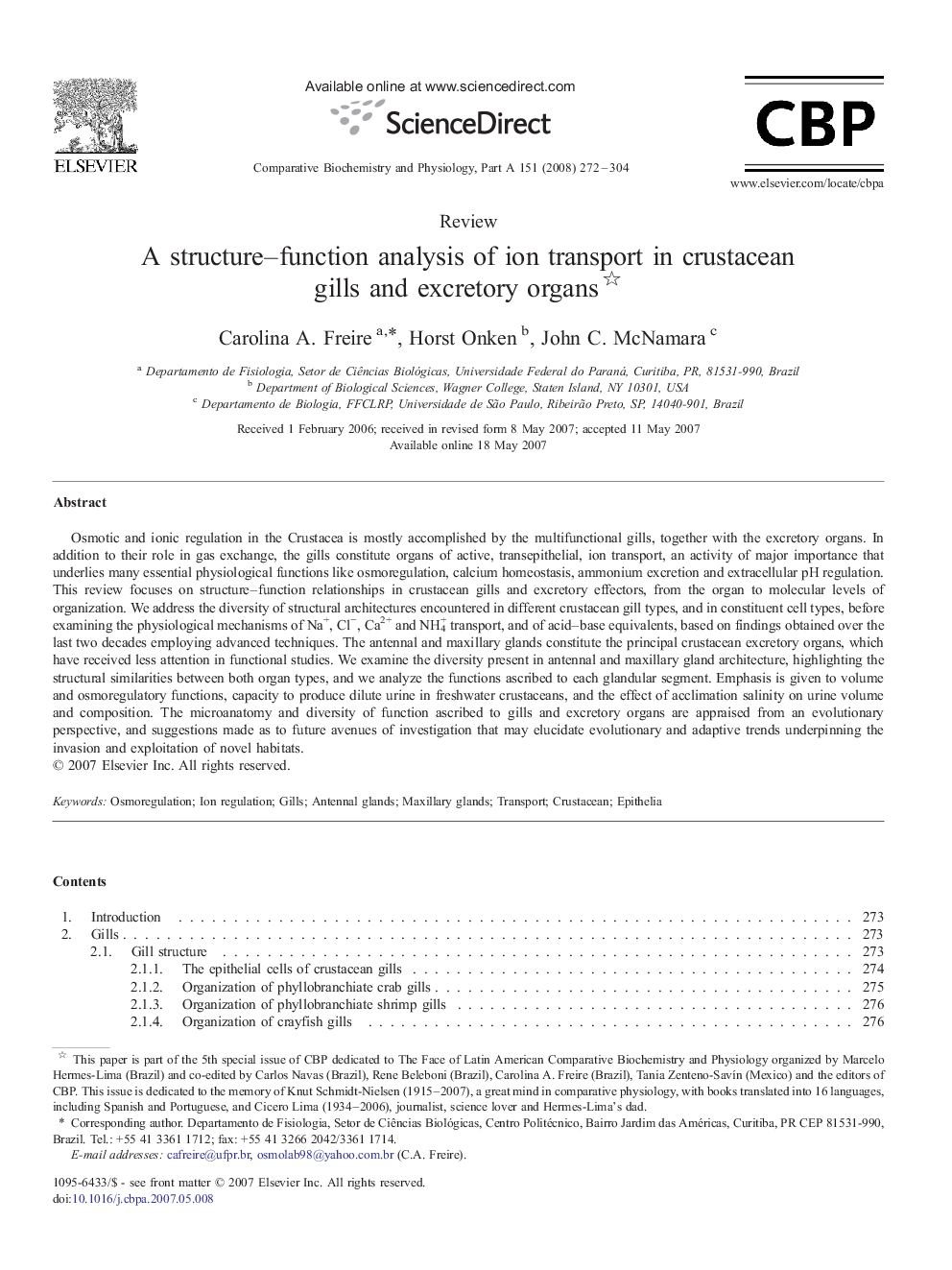| Article ID | Journal | Published Year | Pages | File Type |
|---|---|---|---|---|
| 1974678 | Comparative Biochemistry and Physiology Part A: Molecular & Integrative Physiology | 2008 | 33 Pages |
Osmotic and ionic regulation in the Crustacea is mostly accomplished by the multifunctional gills, together with the excretory organs. In addition to their role in gas exchange, the gills constitute organs of active, transepithelial, ion transport, an activity of major importance that underlies many essential physiological functions like osmoregulation, calcium homeostasis, ammonium excretion and extracellular pH regulation. This review focuses on structure–function relationships in crustacean gills and excretory effectors, from the organ to molecular levels of organization. We address the diversity of structural architectures encountered in different crustacean gill types, and in constituent cell types, before examining the physiological mechanisms of Na+, Cl−, Ca2+ and NH4+ transport, and of acid–base equivalents, based on findings obtained over the last two decades employing advanced techniques. The antennal and maxillary glands constitute the principal crustacean excretory organs, which have received less attention in functional studies. We examine the diversity present in antennal and maxillary gland architecture, highlighting the structural similarities between both organ types, and we analyze the functions ascribed to each glandular segment. Emphasis is given to volume and osmoregulatory functions, capacity to produce dilute urine in freshwater crustaceans, and the effect of acclimation salinity on urine volume and composition. The microanatomy and diversity of function ascribed to gills and excretory organs are appraised from an evolutionary perspective, and suggestions made as to future avenues of investigation that may elucidate evolutionary and adaptive trends underpinning the invasion and exploitation of novel habitats.
